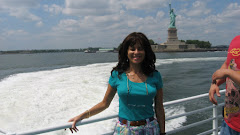 |
| Mostar Bridge |
Lately, I find I am fascinated by the subject of the former Yugoslavia and the six rather newly independent countries it now comprises.
My visit to this region today was both inspirational and somber.
A Quick History Lesson-The Balkans and Yugoslavia
“Yugoslavia” was an artificial union of the various South Slav ethnicities that lasted from the end of World War I until 1991. The people descended from the same ancestors and speak closely related languages, but they practice different religions.
Actually, Yugoslavia composed the western half of the Balkan Peninsula, a wide swath of land in South Eastern Europe, stretching from hungry to Greece that has long been a crossroads of Cultures.
Over the centuries, an endless string of emperors, crusaders, bishops, and sultans have shaped the regions diversity but have always produced conflict because people yearn for independence.
The assassination of a ruler of one of these subjugated people even led to the outbreak of World War I. For years, the Balkans were called “The Powder Keg of Europe”.
Yugoslavia was divided by a series of cultural, ethnic, and religious fault lines. The most important influences were three religions: 1) Western Christianity (i.e. Roman Catholicism) primarily brought to the western part of the region by Charlemagne (and later reinforced by the Austrian Hapsburg’s), 2) Eastern Orthodox Christianity brought to the east from the Byzantine Empire, and 3) Islam (in the south, from the Ottomans). Catholic South Slavs are called Croats; Orthodox South Slavs are called Serbs; and Muslim South Slavs (whose ancestors converted to Islam under Ottoman rule) are called Bosniaks.
Going further back in history, the Balkans had been the site of conflict between the Austrian and Ottoman empires for centuries before both collapsed during World War I. The peace conference which redrew the maps of Europe created "The Kingdom of Serbs, Croats, and Slovenes" out of territory in the area, pushing together groups of people who soon disagreed about how they wished to be governed.
 |
| Refugees From 2nd Balkan War-(pre WWI) |
A strictly centralized state formed, but opposition continued, and in 1929, the king dismissed representative government--after the Croat leader was shot while it Parliament--and began to rule as a monarchical dictator. The kingdom was renamed Yugoslavia, and the new government purposefully ignored the existing and traditional regions and peoples. In 1941, as World War II spread all over the continent, axis soldiers invaded.
 |
| Pre-Civil War Yugoslavia |
During the course of the war in Yugoslavia--which had turned from a war against the Nazis and their allies to a messy Civil War complete with ethnic cleansing--communist partisans rose to prominence.
When liberation was achieved, it was the Communists who took power. The old Kingdom was now replaced by a federation of supposedly six equal republics, which included Croatia, Serbia, and Bosnia, and two autonomous regions, including Kosovo.
For decades, under Tito, these disparate groups lived harmoniously, side-by-side, enter marrying, and even serving in a multi-religious army together. However, after Tito died, the divergent wishes of the six republics began to pull Yugoslavia part, a situation exacerbated by the collapse of the USSR in the late 1980s. Without their old leader, and with the new possibilities of free elections and self-representation, Yugoslavia divided. In the aftermath a Serb dominated army emerged.
It was Serbs against Bosniak's and Croats, all fighting for land and power. I recall hearing daily news of this gruesome war, which dominated the headlines from 1991 until 1993.
 |
| Former Yugoslavia in 2013 |
While there continues to be healing and recovery, there is hope in the entire younger generations who did not experience Civil War.
Bosnia-Herzegovina
Today, I visited one of the most intriguing countries on my bucket list: Bosnia-Herzegovina.
When I lived in Europe during college, Eastern Europe, including Yugoslavia, were understood to be off limits to us.
Along with the rest of the world, I watched the Yugoslavian nations collapse and break apart, one-by-one, after strongman Tito died. Many nations gained their independence after bloody civil wars between Yugoslavs who had been friends, neighbors, brothers. And nowhere was the fighting fiercer or more terrible than in the beautiful but divided jewel of the Bosnia-Herzegovina region, Mostar, which was the highlight of our tour.
Bosnia suffered the most devastating of civil wars and thousands were murdered during Slobodan Milošević’s ethnic cleansing campaigns resulting in extremely ravaged war damage in many areas. Bosnia emerged an independent nation several years later but obviously paid a heavy price.
The country continues to heal from the physical and emotional wounds inflicted by war that ended two decades ago. Fortunately, a new generation breathes new life into the county.
We left the port of Dubrovnik, Croatia taking a scenic 2-hour drive, passing thru several passport checkpoints (borders where Bosnia contains 5 miles of coastline real estate along the Dalmatian /Croatian coast because Bosnia was given 5 miles of coastline at the end of the war.) As we weaved in and out of Croatia and Bosnia, tension among the groups was palpable. We dared not make any waves as border guards checked our passports.

 |
| Pocitelj |

Along the way, we made a half hour stop in Pocitelj – And old walled Bosnian town, which during the Middle Ages, was considered the administrative center and seat of government of its county, while it's westernmost point gave it major strategic importance. The city represents one of the few areas in Bosnia Herzegovina that were preserved in their integrity to present time.
It's significant strategic role from the 13th to 17th century gave its habitants the power to build one of the most important and best preserved settlements within the city walls in the entire region.
The city has a few small restaurants, coffee shops, and street vendors selling local grown fruits and souvenirs. Hopefully, I will be able to explore further, during my next visit, minus the rain!
Our next stop was Mostar which beginning in the 15th century, became an important hub for the ruling Ottoman Empire (Muslim Turks), under whom Jews and Christians were also tolerated to live (with certain restrictions). The result of this was that Mostar became a key trading post for the region, a melting pot of cultures and nationalities influencing (and occasionally fighting) one another. Noted for its harmonious ethnic diversity, groups turned against each other during the 1990s and the result was massacre after massacre and the Civil War that most regret today.
This was the most heavily bombed of any Bosnian city during the war in Bosnia-Herzegovina following the break up within Yugoslavia.
I was able to visit the most important symbol of the conflict: the bridge in Mostar, the city's cultural spiritual heart.
Mostar has been most famous for this beautiful historic Ottoman style bridge, which spanned the Neretva river in what is considered the historic center of the city. Importantly, it served as a literal connection between East and West. It did not survive the conflict.
It was a rainy day but the colorful umbrellas brightened it. For my next trip, I will visit the modern side of Mostar which we saw entering and entering the city.






















.jpg)
.jpg)




No comments:
Post a Comment